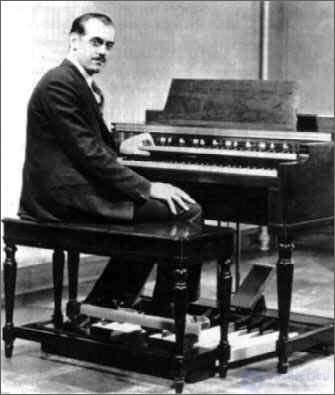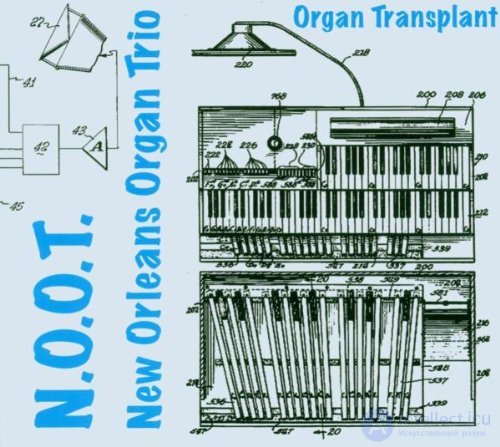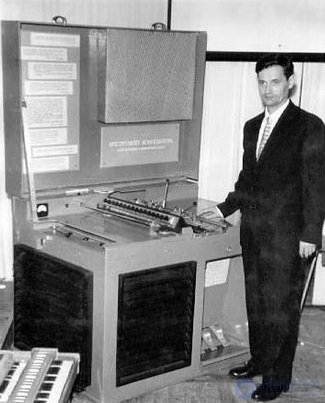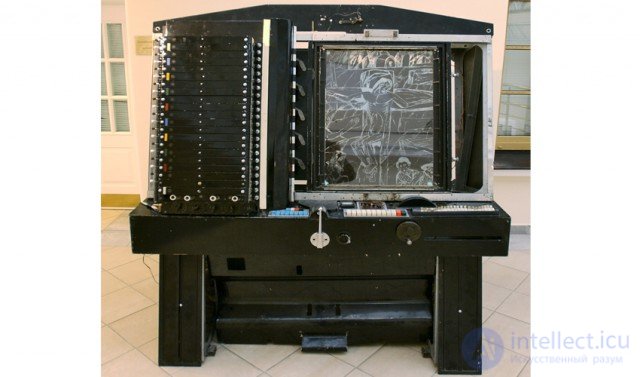Lecture
Music Informatics is a section of computer science that studies the application of information technology in music and sound processing. The word information (from the Latin informatio), means "information, presentation, explanation." Not every sound data created by anyone or anything is sound information. Any data created by any source becomes information (including music) as a result of their perception by a person or processing according to a given algorithm. Musical and other sound information exists exclusively in the system : source (producing data) - receiver (person or device processing sound data with some kind of human-specified purpose). Information exists for the sake of information processes.
An information process is a process of collecting (receiving), transmitting (exchanging), storing, processing (transforming) information.
Thus, only a certain human interest turns sound data into information. Accordingly, there are certain properties of information that determine the effectiveness of the functioning of information processes:
Information receivers may perceive the same information differently. The same information may be relevant, accessible to some and not relevant and (or) inaccessible to others. To be redundant for people with one goal and not sufficient for people with another. Match the reality in which some people live, and be inadequate for others. Allow generalizations for some parameters and be unrepresentative for other parameters.
The combination of all existing information and information processes constitute the information world.
An information model is a set of logically related information, reflecting the essential properties of the real object of research, which are selected in accordance with the given purpose of the simulation. The musical image is an informational model of not a material object, but an existing one in musical thinking. A peculiar model of the model.
An information object is a collection of logically related information (an information object is obtained from the information model by “alienating” information from the original object).
Information world - a variety of diverse information objects.
Sources and receivers of audio information are not necessarily people.
The main types of musical information:
The program of the discipline "Musical Informatics" consists of seven sections:
1) electromusical instruments and music computers, their scope of application;
2) the fundamentals of acoustics and theory of timbre;
3) sound equipment, theoretical and practical aspects of digital recording;
4) a computer set of musical text;
5) recording, editing, processing and restoration of sound;
6) MIDI-digital instrument of musical instruments;
7) the creation of a multimedia presentation.
The first electromusical instruments
The beginning of the relatively wide use of electrical engineering in music dates back to the mid-1930s. During this period, Lawrence Hammond patented the electric organ. Most important was that the Hammond organ was controlled using the familiar organ keyboard.


The synthesizer was developed by the colonel of artillery and inventor Evgeny Murzin. His first model was created in 1957 and was named after the initials of the composer Alexander Nikolaevich Scriabin (ANS).
In 1958, the first valid layout was ready. From this moment begins the history of the Moscow Experimental Electronic Music Studio.
Eduard Artemyev used ANS to create music for Andrei Tarkovsky’s films, in particular, to write the Ocean theme in the film “Solaris”.


The first commercial synthesizer. Its creator was Robert Moog. Mug's first instruments were very large and were suitable only for the studio, not for the stage.
Moog's synthesizers were used by leading rock bands of the time, such as the Beatles, the Rolling Stones and the Doors.


In the late 70s computers allowed to automate many processes. Creators of musical instruments were aware of the creative potential of such a powerful controlling tool, and many tried to make a hybrid that allows a computer to control a synthesizer.
Introduced in 1978, Synclavier was a music workstation based on the Apple Macintosh II computer. It was the world's first keyboard workstation, which became known for its rich sound, sound flexibility, as well as performance and speed.
It was used by the most famous musicians of the time: Genesis, Duran Duran, Herbie Hancock, Depeche Mode, Sting, Frank Zappa and many others.
The first programs for computer music set originated in the late 80s of the twentieth century. The most famous notary programs are Finale, Score and Sibelius. They all have four main operational functions:
-working text for songs and comments;
-notny set with a large supply of musical signs;
module approximation or tightening (drawing) to adapt the arc legato under the length of the notes and other modifications;
-development descent.
Graphic revision is needed to get as close as possible to the aesthetics of hand engraving sheet music.
Music editors provide the ability to type, print and play the dialed tune and record it into a computer file.
Appeal to computer
technology facilitates the process of musical set and layout of scores for any creative team,
create different sheet music
reading book.
Sound processing and restoration
The computer helps to create orchestration and arrangement of the work of any author, as well as his own, to check and correct its sound.
Moreover, the orchestration can be performed in any timbre composition and burn the piece to CD, since it is not always possible to find the necessary composition of performing musicians, especially if unconventional instruments are involved or electronic sound processing is expected, unusual sound effects,
MIDI-digital instrument of musical instruments;
Computer harmonization of the melody attracts the attention and interest of musicians who constantly have to harmonize a particular melody or bass, create a textured melody with an already defined chord scheme.
The computer can offer its own solutions to such problems as a comparison or a sample of such work. In this case, you can use the music trackers to create simple, lightweight treatments or arrangements of popular tunes.
The most popular computer music programs today are computer harmonization of melodies.
and digital music synthesizer (MIDI sequencer).
Applied music software
Band-in-a-Box is one of the auto-arranger programs based on the midi-standard. The name of the program can be translated as “ensemble in a casket”, which shows its essence.
With this software, you can easily create from scratch arrangements, "backing tracks" for your favorite songs, karaoke music, using various tools and elements of many musical styles.
Comments
To leave a comment
Informatics
Terms: Informatics